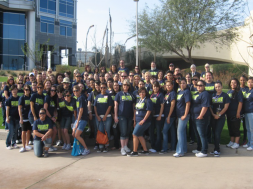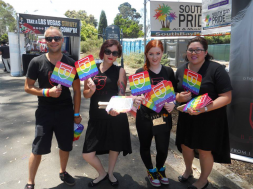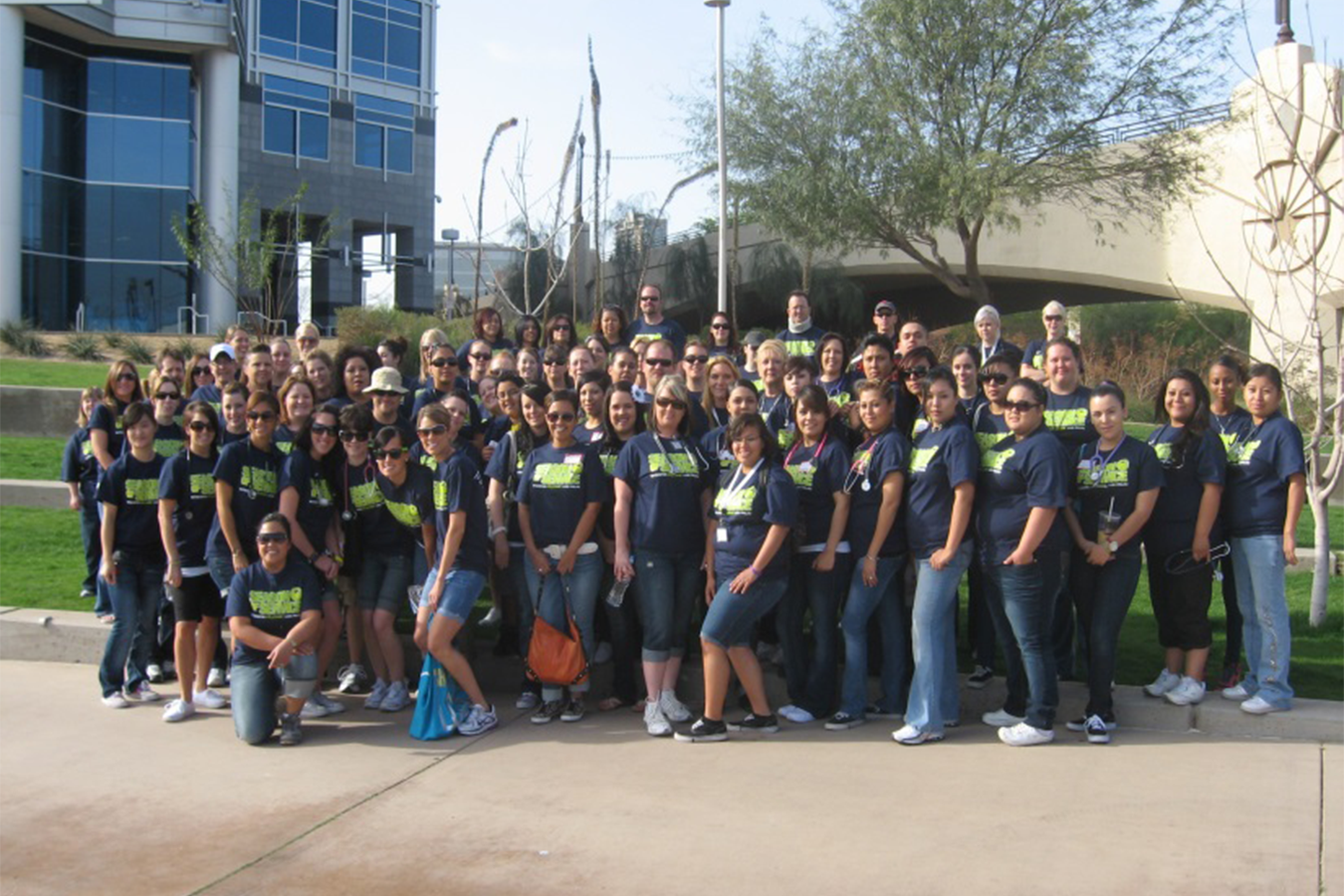
The Lifecycle of Giving
By Kristen Torres, Regional Director of Operations, Pima Medical Institute
“We make a living by what we get, but we make a life by what we give.” – Sir Winston Churchill
There’s a lot of buzz about community service. It’s certainly not a new concept, and in the past few years, organizations across the globe have invested a lot of amount of resources to corporate-backed community outreach programs. Some call it corporate social responsibility (CSR), or corporate citizenship, but no matter what acronym or catchy new phrase you wish to spin it with, the goal is to get your employees motivated and out making a difference.
Employee volunteer programs (EVP) are created to distinguish companies from their competitors, create happier employees, and ultimately boost the bottom line. Inc.com article, “7 Ways to Improve Employee Satisfaction,” cites volunteer programs as an integral component to employee happiness: “Encourage out of office socialization such as volunteer programs. This gives employees a chance to develop relationships outside of the office while promoting the company in a positive way. Community service is a great way to build a positive reputation, and it is a happiness booster for employees.”
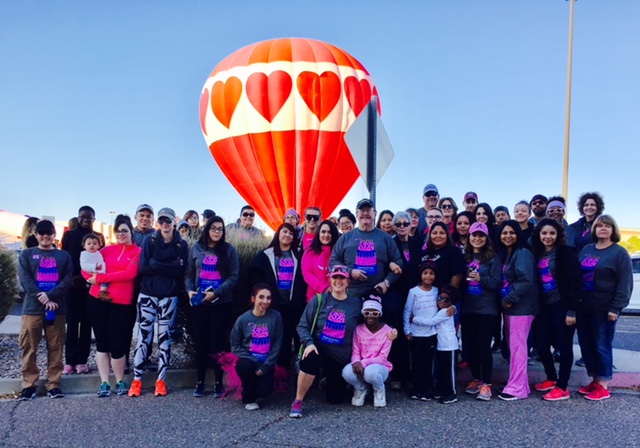 People want to feel good about their work, and employees feel a greater sense of intrinsic satisfaction and loyalty when their company supports causes they care about. According to Boston College Center for Corporate Citizenship, Community Involvement Study of 2015, “Of the 60 percent of companies that measure the connection between engagement in their employee volunteer program and employee engagement, 89 percent found a positive correlation.”
People want to feel good about their work, and employees feel a greater sense of intrinsic satisfaction and loyalty when their company supports causes they care about. According to Boston College Center for Corporate Citizenship, Community Involvement Study of 2015, “Of the 60 percent of companies that measure the connection between engagement in their employee volunteer program and employee engagement, 89 percent found a positive correlation.”
Within our education space, we have an immediate trove of resources with dedicated faculty and staff to fulfill just about any outreach initiative you can think of. Faculty in the front lines with our students, day in and day out, have dedicated their lives to serving and helping others, so they are naturally the first to be tapped when coordinating a team for the next event. To truly up the ante and take community outreach to the next level, many schools overlook the opportunity to involve their students. Not just asking students to participate, but asking students to LEAD in these initiatives. Many assume that since many students are in need themselves, they are not able to give. This is a false assumption, which we will get into more later. Here’s why you should tap into the collaborative talents of your students immediately for developing and driving a robust service-driven culture at your institution:
- Meeting employer needs. This one is huge. How often do we hear from employers during advisory board meetings or in employer surveys that they need more soft skills? Professionalism? Leadership? Customer service? Proactive initiative? A student who has participated in and had experience leading service opportunities not only has an advantage to highlight on their resume but also gains leadership experience and confidence.
- Actively engages employers with your team and strengthens position within the community. Your students, faculty, and staff serving together to benefit an event or need from one of your employers is a powerful win-win combo.
- Student recruitment, engagement, and retention. Just like employees want to feel good about where they work, students want to feel connected to the community and their school. They have a greater sense of school spirit and pride when they are devoted to meaningful causes. The millennial generation is especially motivated by organizations dedicated to service. According to the “Millennials Civic Health Index,” not only do the millennials vote in large numbers, but their volunteering and community service rates are much higher than previous generations. If you are successful in establishing a strong service program, this is not only a powerful retention strategy but an excellent recruitment tool. Being able to showcase student life that emulates a family deeply connected to the community speaks volumes to someone coming into potentially change their life.
- Boost morale and fulfillment of faculty and staff. Walk through the doors of a campus that go about their day focused on the normal tasks associated with running a school. Now walk through the doors of a campus that do this and also is preparing for and collaborating on a fun service project. You immediately sense the excitement, the energy, the buzz. It is positively contagious.
So let’s dive into some best practices. How do you begin? How do you execute? The first step is to listen. Listen and learn from your students, your faculty and staff, your employers. I suggest hosting focus groups on campus to gather their input. Advisory board meetings are a great platform for gathering input from employers, but you will also want to host separate focus groups for your students and employees. Kick off the focus groups by reviewing your school’s mission, vision statement, and goals. Then delve into a brainstorming session that will ultimately empower attendees to lead the charge. Questions to ask during your focus groups:
- Which outreach programs are they passionate about?
- Which organizations and community events would be a natural fit for our school and create a mutually beneficial partnership?
- What projects would be most meaningful? Most fun? Most impactful?
- What are our budgetary constraints and fundraising capabilities?
- Which events or projects could be most successfully executed with our resources?
- Where will we get the biggest bang for our buck?
Once you have gathered the ideas, you need to align your troops. The most critical element to creating a team who can execute is to build a team with structure. Create a community committee who will be responsible for leading these initiatives, equipped with positions and titles. Electing school ambassadors or a student body is a fantastic experience for students to partake in. Your team captain or “president” is vital to help drive communication between the students and a trusted manager on campus who can help oversee and provide resources for them. At Pima Medical Institute’s Mesa, AZ campus, some of the degree programs have their own program association with elected leaders, such as the student nurses association. The association holds program elections each year to determine a president, secretary, treasurer, etc. These student associations work under the direction of program faculty leadership, who in turn collaborate with the administration’s campus events committee. Often they work together on specific fundraisers and events, and often the programs completely host their own initiative, led entirely by the students. Both program-specific and mixed-program student teams have their place and have proven to be wildly successful models. Oversight is key.
Ideally, you will establish both a student-run and an employee-run community committee, and both committees will collaborate for specific events. It is important to also have an employee-run committee to steer the direction of the events and help control costs and deadlines. In many instances, your student services manager is the perfect person to help oversee the team. Career services is another terrific match, depending on the project.
Often we are afraid to ask students to get involved and volunteer due to the knowledge that they are in need themselves. While careful consideration must be made as to the level and type of involvement students are tasked with, the implementation of a mentorship model within the structure of your committees will help improve self-image, worth, and decrease their own risks through opportunities in philanthropy. In “Bridges out of Poverty,” strategies for increasing volunteer service are directly correlated to the importance of relationships. “If the volunteer activity involves relationship, the protégé from the poverty culture will experience greater inner gratification. Schools, retirement homes, and hospitals have programs to which relationship is key. Commitment to some activity outside self is essential to healthy emotional balance and has been linked with longer life spans.” (Kayne, Devol, & Druessi Smith.) Establishing a mentorship model within the team structure, and placing students of need into projects highly centered on relationships can be a terrifically rewarding experience and growth opportunity. At Pima Medical Institute, we have been blown away by the generosity of some of our students. With so many of them coming from a place where they have needed assistance, the opportunity to be the one in a position to give back is a joyous and proud time.
Once you have established the structure of the committee(s), you must decide how to organize your time. Schedule regular, consistent meetings. Schedule regular, consistent meetings. Whether you decide to meet once per month or every week, establish a regular meeting schedule and put it on everyone’s calendar. Outlook calendar is truly your best friend to create reoccurring meetings that everyone can plan on and be reminded of the next meeting. Set up automatic reminders in the system to go out. Place someone in charge of communicating with the students and emailing out reminders or posting notices around campus. Often times the lunch hour is a convenient time for people, and you can garner involvement and attendance from both morning and afternoon students, depending on your class schedules. One trick that always helps drive attendance at these meetings is to provide inexpensive lunch or dessert. Everyone loves meetings where food is provided!
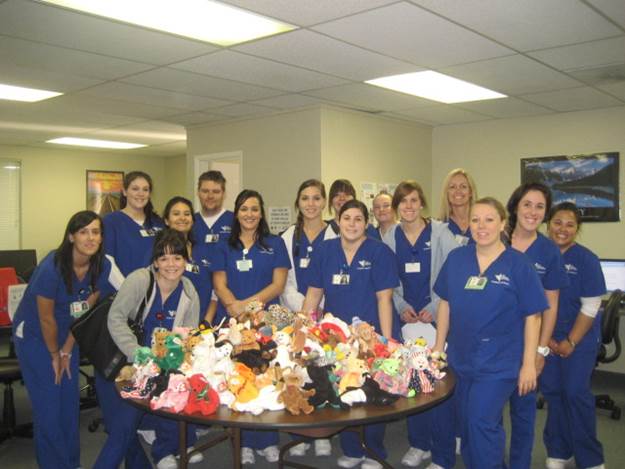 Continue to provide structure to your committees, plan in yearly time frames by the implementation of a “Calendar of Service.” Create a calendar of events for the school so that projects have a published time, scale, and scope. You can choose one or two signature events, say, one in the fall and one in the spring, or you can do smaller events every month. If you implement Student Program Associations, encourage them to create their own calendar of events, however, make sure it is incorporated into the larger organization’s calendar. One appointed person needs to manage the Campus Calendar to prevent overlapping or competing events. Once your calendar is created, publish it! Sound the horn! Now it’s time to recruit your muscle power, and this is where the fun begins!
Continue to provide structure to your committees, plan in yearly time frames by the implementation of a “Calendar of Service.” Create a calendar of events for the school so that projects have a published time, scale, and scope. You can choose one or two signature events, say, one in the fall and one in the spring, or you can do smaller events every month. If you implement Student Program Associations, encourage them to create their own calendar of events, however, make sure it is incorporated into the larger organization’s calendar. One appointed person needs to manage the Campus Calendar to prevent overlapping or competing events. Once your calendar is created, publish it! Sound the horn! Now it’s time to recruit your muscle power, and this is where the fun begins!
Collaborating on a “signature event” that people look forward to every year is the single best way to truly lead in your community. Whether it is fundraising for an established nonprofit affair such as a walk or festival, or developing your own unique event, you must decide on which initiatives are going to be the most meaningful for all involved and drive the most positive impact to your market. “For the organization to perform to a high standard, its members must believe that what it is doing is, in the last analysis, the one contribution to community and society on which all others depend,” Peter Drucker, “Managing in a Time of Great Change.”
Communication is essential to executing effectively. Every department, every facet of your organization should know the who, what, why, where, and when. Here are some best practices in creating excitement, competition, and community buzz that people look forward to every year for your signature event:
- Host competitions amongst the programs or even amongst campuses or partner schools.
- Program director challenges, campus director challenges.
- Create a company-wide community service challenge or award.
- Give prizes to the most successful class/program/campus (inexpensive pizza parties or ice cream socials work great!).
- Consider a matching offer for funds raised.
- Let students and faculty get the joy of delivering a large check to your nonprofit (photo opp!).
- Social media madness.
- Host competitions where people vote for a winner on social media. This can drive a LOT of traffic to your social sites if done correctly. One example: have each of the programs or classes do a theme-related pumpkin carving contest for Halloween to raise funds for a certain cause. Have all the students, family, and friends log on to vote for the winning class or program.
- Make sure to take lots of pictures of your students during their service activities. Post it up, spread the positive news about how your students are giving back and leading in the community!
- Invite local elected officials to your campus to witness the great work you are doing. Ask them to participate in an event and help promote it!
- Ask local radio stations and news stations to come on campus.
Establishing a partnership in your efforts can help lighten your load and ease the financial burden. Let’s say your goal is to raise $5,000 for a local charity your school is passionate about. Set out to create a partnership within the same metro market so you can split the costs of sponsorship. In addition to employers or agencies, you can partner with sister campuses within the same company, or fellow state association member schools. Not only will you share the costs and r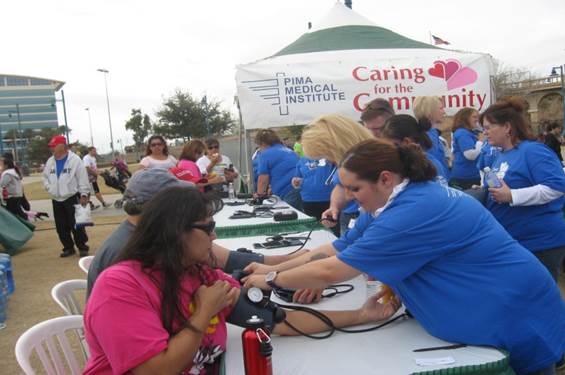 esources to participate in the event, but you can have an even larger presence being a full force together in the community. Come together with your state or regional association to create a “community leadership day” or start a service leadership award for member schools to be presented at an annual conference.
esources to participate in the event, but you can have an even larger presence being a full force together in the community. Come together with your state or regional association to create a “community leadership day” or start a service leadership award for member schools to be presented at an annual conference.
Once you have the structure, the events, and the right people and partnerships in place, now is the time to have fun! This is where the magic happens, and you can see your teams come to life organizing and leading events. The opportunities and ideas are endless. Some require fundraising and just as many don’t! Here are a few:
- Jeans days/sports jersey days/costume theme days, etc.
- National days = 365 days of crazy! For example, sell hot dogs for National Hot Dog day, dog grooming for National Puppy Day, donuts for National Donut Day. Students will have more fun coming up with these!
- Penny Wars. Truly the art of fun competition amongst classrooms.
- Rummage sales – you will be surprised how much can be raised from everyone cleaning our their garage and closets and hosting a sale on campus!
- Toy drives (huge at Christmas).
- Food bank drives – also consider starting your own campus food bank for students in need.
- Social media pledges (Walk/run teams, etc.).
- Blood drives, backpack drives, school supply drives.
- Dunking tank for campus director, program directors, etc.
- Ask agencies such as VA/WIOA what they are in need of. Create events or drives for them. For example, clothing/shoe drive for local VA, special service classes, or screening event.
- Complimentary classes/clinics for community members.
- CPR for families, HVAC maintenance tips for homes, etc.
- Host continuing education unit opportunities for advisory board members, state Program associations, employer needs.
- Angel tree for student’s children (in need).
- Lion’s Club eyeglass donations.
- Local shelter clothing drives.
Creating a culture of service does not happen with just one event. You must authentically model this culture day in, day out. You can do so by weaving service projects into your curriculum and lesson plans and creating a system of Professional Performance Standards (PPS) to grade students on service, attitude, and extra credit projects. When you promote the culture of service from the onset with admissions showcasing pictures and video of student service, it needs to be carried out in the classroom and beyond. Faculty and staff must model it from every position within the school. Students will follow in your footsteps when they see your active engagement in service, including leadership on Boards. Celebrate your champions of service by acknowledging them in the classroom or at graduation ceremonies, thank them for their hard work in front of their peers, and promote their good work to employers. Don’t forget to also award faculty and staff with service awards in company meetings! Last but not least, plan for the future. Challenge your committees and career services directors to cultivate long-term service plans based on employer needs. Create outreach events that connect with certain employers or a specific goal in mind. Seek employer feedback regarding barriers to employment – then establish service leadership opportunities that address these for graduates. You cannot underestimate the power of employer partnerships in truly establishing a robust, flourishing culture of service.
Our students are stepping out into a life of service and will be called upon to lead in times of tumultuous change. Equip them today with the skills they will need. Collaborate with faculty and staff to create an enjoyable, gratifying experience for everyone. Stay consistent with your structure and meetings, and focus on the priority projects that will be most beneficial to your school and that of your partner employers. Have fun and promote the buzz! And don’t forget to let the students LEAD. This is a connection that is, in many cases, critical to the success and well-being of our students. This is the lifecycle of giving. Our students will thrive, and our communities will thank us.
KRISTEN TORRES, for the last 15 years, has driven excellence in private postsecondary education through a collaborative partnership style dedicated to student outcomes. Kristen takes pride in empowering her employees to create innovation and growth, producing award-winning programs and initiatives while enhancing company values and culture. She is currently serving as Regional Director of Operations for Pima Medical Institute, overseeing the western region. Prior to her regional role, she served as Campus Director for Pima’s Mesa, AZ campus for eight years. A Valley Leadership alumna, Kristen is a board member of the Arizona Private School Association, having served as President and Legislative Chair. Some of her most challenging and rewarding work has been educating elected political leaders regarding the benefits of our sector both at the State Capitol and in D.C. Committed to giving back, Kristen serves on several community boards and advisory councils, including Abrazo Scottsdale Hospital and the American Lung Association of Arizona. In 2015 Kristen was named a top Forty-Under-40 professional by the Phoenix Business Journal. Outside of work Kristen can be found trekking to exotic adventures with her family and searching for awesome food.
Contact Information: Kristen Torres // Regional Director of Operations // Pima Medical Institute // 480-565-6174 // ktorres@pmi.edu // Social Media: linkedin.com/in/kristenblakelytorres
